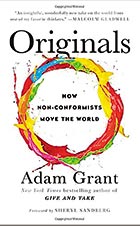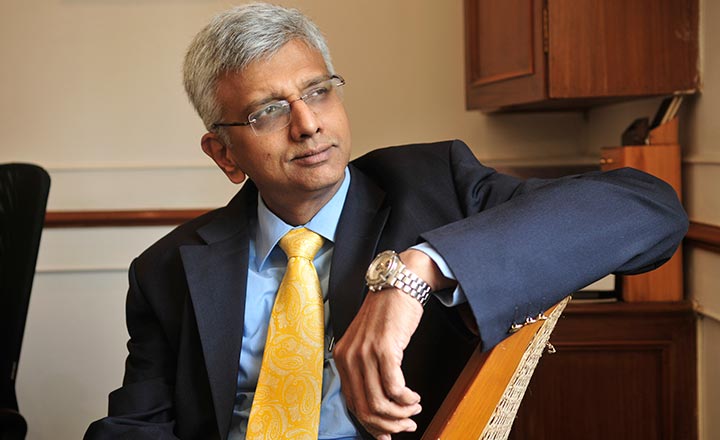
We all have several pre-conceived notions about what makes a successful entrepreneur. In this age of start-ups, these notions get even more hard-wired. We think a start-up promoter is a brave young man, willing to throw away a career in management consulting and jump into the deep end of a pool, with just a smattering of swimming knowledge. We also think that the average VC knows more than any of us and their valuation of companies, that gets written about in all newspapers and magazines, current company included, are sacrosanct.
But then comes a book like Originals that questions many of these pre-determined notions. This is the second book written by Adam Grant, who has been named as one of the best teachers of management at Wharton School of Business in University of Pennsylvania. He brings his skills in organisational psychology to look into the success factors of non-conformists who change the world. The book upends many of our notions of what makes a successful entrepreneur, what makes a successful enterprise and why VCs/angel investors can go very wrong.
Adam Grant’s research into the way companies get formed and grow, raises some serious questions about our conventional methods. For example, he points out that some of the most successful companies were created by people who did not jump in headfirst. In fact, the co-founder of Apple decided to retain his day job at HP as he was not sure where the company would go.
It may be apt to recall an early Apple ad that says, “Here's to the crazy ones. The misfits. The rebels. The troublemakers. The round pegs in the square holes. The ones who see things differently. They're not fond of rules. And they have no respect for the status quo. You can quote them, disagree with them, glorify or vilify them. About the only thing you can't do is ignore them. Because they change things. They push the human race forward. While some may see them as the crazy ones, we see genius. Because the people who are crazy enough to think they can change the world, are the ones who do”.
The book says that while the ‘Originals’ change the world, they do it with the same fear, and doubt, like any of us. We sit tight, while they go ahead and do it. The book has been structured into four sections that look at various aspects of what we assume about entrepreneurs and entrepreneurship.
The first section speaks about how to manage risk involved with generating, recognising and voicing original ideas. I discovered how my favorite TV program Seinfeld almost ended up on the cutting room floor. But for the tenacity of one young producer, who managed to keep the project funded, the program, which went on to become the biggest grosser of its decade, may have never seen the light of day. The program Nothing as it was called, almost ended being nothing.
The second section speaks of the traps in scaling a project. What happens when a project is scaled up too fast, hubris takes over and rational thought gets booted out. Segway is a great example of a project that got so hyped up that it was destined to fail.
The third section revolves around unleashing and sustaining originality at home and work. Did you know that the first born in a family may not always be the most risk-taking of all the siblings? The magic recipe of the last child in a large family is explained well.
The last section looks at emotions that hold us back from pursuing originality and the barriers we need to overcome. In fact, calming down may not be the solution to handle anxiety; pessimism is sometimes more useful than blind optimism.
The book summarises this alll in a set of ‘Actions for Impact’ that should be a must read for all budding start-up champions and VCs. And yes, I'd like to print those tenets onto a poster and put it up in my office for the benefit of young entrepreneurs who come to me for branding advice.











